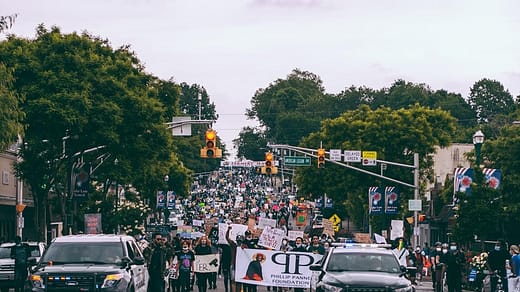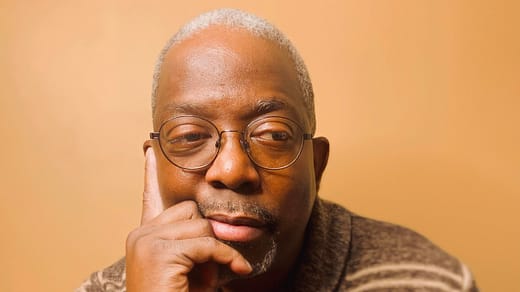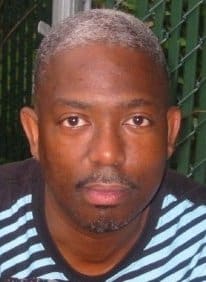originally published at https://www.tigerstrikesasteroid.com/tagged/ineverplayedwithdollsessay
“The mystery is only why I wanted to look
while others around me closed their eyes…”
bell hooks, Art on My Mind (1995)
Sana Musasama (b.1957) Saint Albans, Queens, born/bred/based ceramic artist & global traveler/human rights activist, creates arts beyond definition (much like herself) but speaks volumes of our collective history.
As an artist/activist, Musasama has explored beyond her boundaries in her work. Her work has evoked the penal system, child marriage, ritualistic surgeries, child soldiers, child sex slaves, and human trafficking. Just to name a few societal/political/personal issues addressed in her ceramic and mixed media.
In her work, Musasama speaks of the matriarchal patterns in her life (lessons she learned from her mother), and the lives of the girls she has mentored, including the victims of sexual trafficking in Cambodia to the young women she worked with in the penal system of New York City. Over forty years of traveling, reinterpreting historical narratives, gender, place, time, and artwork by women of color have informed her art practices.
In addition to some of her mixed media work, her ceramic pieces have had a visual dialogue with the viewer about the human condition. These uncomfortable dialogues within her work have transitioned over time and place. Musasama stated, “after the pandemic and the shape in which we find the society/world, I wanted my next work to not only speak to the indomitable human spirit but joy and love. I want to honor the women that influenced me and the young girls I have mentored all my life.” With this impetus, she created the I See Me dolls, from her childhood and the Topsy Turvy dolls which were historical dolls popularized during the antebellum period of the United States.
In the narrative of Musasama’s I See Me dolls, she excavated material closer to home and to her heart. This is about Musasama growing up and not loving her kinky hair, about being on a block that had many different nationalities, Musasama (like many black women growing up) preferred hair that was silky, and easy to comb, and “blew in the wind.” Musasama references a childhood lesson of self-love from her mother, who sought to show her the beauty of being black and kinky. She is replicating what society once called “pickaninny”(a derogatory name for little enslaved children) and deemed “ugly” into a lesson on colorism, and self-love. Musasama forces the audience to look and see the beauty of these dolls, much like her mother showed her the beauty in who and what she is.
These dolls surpassed the stereotypical, racist, historical narrative. They become Musasama’s and other black women’s (who carry the same wounds of childhood and colorism) narratives. These fired ceramic angels speak of self-love and cultural pride that is beautifully crafted in the hands of Musasama.
There are many origins of the Topsy Turvy Doll. One of the theories is that enslaved, black women made these “double-sided” dolls, one-half white, seemingly European, and the flip side black, apparently African. It was said, the enslaved children “couldn’t have dolls in their image” If ever caught with a “black doll”, they would simply “turn it over” to the white more acceptable side. There is another about the opposite being true, that the children of the enslaved shouldn’t play with white dolls resembling their owners thus role-playing superiority, only black ones (1). There are many sides to this seemingly painful legacy.
Was this another uncomfortable historical element to engage? Not in the gifted hands of Musasama, who ironically never played with dolls growing up, has decided to flip this narrative. To Musasama, her new dolls represented resistance, rebellion, perseverance, humor, love, and joy.
Musasama’s narrative in her Dolls includes many of the young women in the penal system in New York City with whom she began making dolls, that were carried to Cambodia, gifted from girls in the penal system in New York City to the girls trapped in another form of a penal system – sex trafficking.
Musasama has an edit list of thirty-eight Topsy Turvy dolls to date. They are Elizabeth Catlett, Edmonia Lewis, Lorraine Hansberry, Maya Angelou, Rosa Parks, Somaly Mam, Frida Kahlo, Elizabeth Jennings, Harriet Tubman, Anne Frank, Sally Hemings, Serena Williams, Venus Williams, Girl Soldier Survivor #1, Unknown Girl Soldier #2, Josephine Baker, Patty Labelle, Grace Jones, Eleanor Roosevelt, Monica Lewinsky, Billie Holiday, Shirley Chisholm, Coretta King, Jacqueline Kennedy, Nina Simone, and Winnie Mandela just to name a few of the women in the collection.
She has paired, for example, Elizabeth Catlett ( sculptor, 1915-2012) with Edmonia Lewis ( sculptor, 1844-1907), both figures defiant in the face of the racism in their lives. Lorraine Hansberry (playwright, 1930 – 1965) is paired with Maya Angelou (memoirist/poet, 1928 – 2014) both of whom uniquely sewed fabrics of the American Dream in their life’s work. Another one of Anne Frank (German diarist, 1929 -1945) paired with her sister, Margot Frank (1926 -1945), who was three years older than Anne, both tied to the same tragic ending but their spirit of resilience/resistance lives on. The artist even has herself paired with her mother, a domestic who instilled in Musasama that creative spirit, who unfortunately passed before her daughter’s first American exhibition.
This is Musasama’s first collaboration, the Topsy-Turvy dolls were shaped by many hands and more recently engineers that helped her craft her vision. Musasama’s ideas are a recurring dream in which two dolls spinning with common or uncommon stories brought humor to the surface of her work. The pandemic crystallized her desire to return to society. It brought Musasama back to the idea of dolls with multiple identities/roles yet has social and political life lessons to learn and relearn.
Musasama’s artwork summons the audience to see these dolls in both collections as representations of a movement to be seen and recognized as human beings whose stories are often denied, nurtured, or looked at. She is celebrating the voices and labor of all the hands that have created/shared/sold these particular dolls through her art/activism. Musasama is inviting society to take a look and learn to love what is.
- “The Racial Symbolism of the Topsy-Turvy Dolls” (The Atlantic, Julian K. Jarboe, November 2015)




Recent Comments